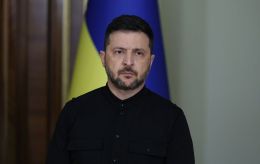Two Ukrainian nuclear power plants operate at reduced capacity after Russian attack
 Photo: IAEA Director General Rafael Mariano Grossi (Getty Images)
Photo: IAEA Director General Rafael Mariano Grossi (Getty Images)
The Khmelnytskyi and Rivne nuclear power plants reduced their output after an electrical substation was damaged during a Russian attack on the night of November 7. This substation is of critical importance for nuclear safety, states IAEA Director General Rafael Grossi.
In the statement, it is noted that substations are critical hubs in Ukraine’s power grid. They are facilities where voltage levels are transformed and controlled to ensure the reliable transmission of electricity.
"For nuclear power plants, they are indispensable for maintaining off-site power supplies that support safety systems and cooling functions, making their integrity vital for nuclear safety and security," Grossi said.
As a result of the Russian strike on the electrical substation on the night of November 7, the Khmelnytskyi and Rivne nuclear power plants were disconnected from one of the two 750 kV transmission lines. Electricity production at several reactors was also reduced following an order from the grid operator.
Although one of the damaged lines has now been restored, the other remains out of service. Three reactors are operating at limited capacity.
On November 14, the Zaporizhzhia nuclear power plant lost power from the Dniprovska transmission line, placing the plant at risk of another blackout.
Earlier, on November 10, Ukraine urged the IAEA to urgently convene its Board of Governors after a new massive Russian attack on the energy system.
That night, Russia launched a large-scale strike using dozens of missiles. The attack was one of the most technologically complex, as Russia deliberately targeted key elements of the power system’s technological infrastructure using intelligence data.

